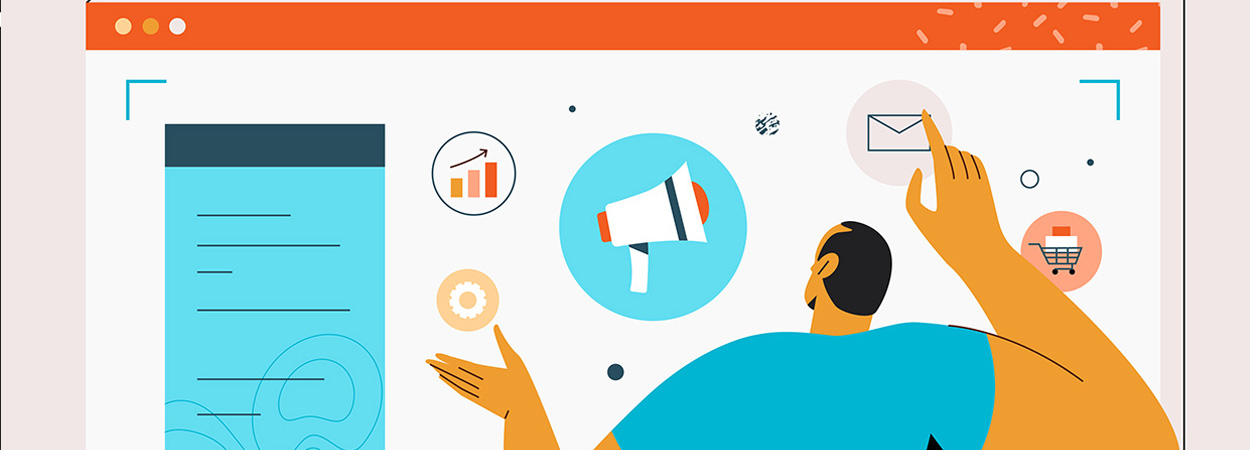9 Psychological Techniques that Influence Consumer Behavior


Probably sometimes you want to get into the minds of your prospective customers and figure out the best ways to convince them to sign up for the newsletter, start a trial, etc. The intersection of psychology and marketing has answers to what you’re looking for.
No, this article won’t teach you how to turn into an armchair psychologist. Instead, we’ll try to understand why people think and act the way they do. Because at the heart of effective marketing strategy is a bold understanding of your prospects’ inner impulses. That’s exactly what the entire field of psychology attempts to clarify.
#1. Highlight emotion ideas
Throw away a dry as dust list of product features or service components. Instead, emphasize the outcome consumers can achieve. Studies have shown that emotional marketing message resonates more with prospects and perform better. So, demonstrate how you will improve a potential client’s life rather than explain how actually your product works.
The trick here is getting prospects to think differently about your offer. In other words, that means developing the appropriate brand narrative. For instance, BigCommerce has understood the power of emotions. They don’t sell e-commerce technologies, but the potentiality of growth empowered with innovations:
#2. Offer exclusivity
Self-esteem sits near the top of Maslow’s hierarchy of needs pyramid. People want to be a part of an exclusive group and gated community. That’s why advertising copy often says: “We’re not for everyone. We are for you. Because you are special”. Nevertheless, you should always mean what you say to make an exclusivity works in the long run. The truth always comes out so empty claims can be dangerous for your business.
Speaking of exclusivity in marketing, take a look at the following tricks used to boost conversion rate. If you run a blog, don’t hesitate to steal them and test out. The first approach is to lock some articles that are exclusively available only for your subscribers. Want even more exclusivity? Sign in to the newsletter for content not found on the blog. The result? You can do nothing other than leaving your email.
The information-gap theory itself is pretty complex, but this is what you need to know about it: this psychology tactic closes the gap between what people already know and what they want to know. You have probably seen the information-gap theory in action in content and social media marketing. Remember the way publishers write headlines like “The secret trick to…”. These phrases pique our curiosity and motivate us to fill the knowledge gap by diving deep into the article. Nevertheless, avoid the urge to use this principle as click-bait with eye-catching and misleading headlines that don’t match the intent of the post.
You can use the information-gap theory in advertising messages or blog post headlines to drive more clicks, traffic and sales with the following no-brainer formulas: “Why Don’t…”, “How to…”, “X things you didn’t know about…” and others. Here’s a great example of how Neil Patel has used the information-gap theory in his blog post headlines:


#4. Start small with the foot-in-the-door technique
In 1966 Freedman and Fraser knocked on doors in California asking if housewives could do something small like signing a petition. Sometime later, the researchers went to the same houses with a larger request like putting a large sign on their lawn. They found that housewives whom they had already approached were more than four times more willing to go the extra mile than a control group that had not initially agreed to the smaller request. This experiment was called “the foot-in-the-door technique”.
The truth is that people generally like to remain true to their word. What is the secret? Once you make a commitment, that commitment becomes a part of your self-image. Reneging conflicts with your new self-image and create a dissonant mental state called cognitive dissonance. So, be aware: if you first make a small commitment, you will be more likely to comply with a larger one.
How can you benefit from this? Start small and then gradually scale up your inquiries. You have probably seen the examples of the foot-in-the-door technique, for example, while leaving your email address on a website. Next, you get corporate news or sales discounts. Before you know it, you are putting your name on a bill.
#5. Embrace the power of the framing effect
The idea of the framing effect is that users will give different responses to the same question or situation depending on how it’s framed or worded. Simply put, context is everything. The way you frame the message on your website or in ads defines the way people react to it.
#6. Inject social proof
Researchers discovered that messages that somehow related to people who read them, was 10 to 15 percent more impactful than impersonal messages. In addition, professor of psychology and marketing Robert Cialdini thinks that when humans are unsure what to do, they look around for advice on what should be done. And whom do they tend to believe? Those who are similar to them.
How to apply this psychologist principle to your marketing strategy? The best method to motivate your prospects to do something is to say that other people in thу same situation have done so and got successful results. In other words, draw similarities among your prospective clients and existing customers with the help of social proof. Social proof claims – and justifiably so – that users will adopt the actions of a group of people they like or trust. If people you know and trust are satisfied with this product, why shouldn’t you?
Here are a few social proof types you can test out:
- Give your users a voice. Research claims that 91 percent of users read testimonials and reviews and 84 percent trust them as much as a personal recommendation. Although testimonials and reviews don’t result in immediate purchases, they are a great way to give your prospects a little more confidence.
- Use social sharing and follow buttons and display the number of followers your social accounts have or the number of shares a blog post has.
- Partner-up with an influencer who is already recognized in your niche and has an ocean of loyal followers that could be influenced to try your product.
- Display recent conversions like opt-ins or sales to boost social proof and improve your conversion rates.
- Feature how many visitors your website or a specific page currently has. This simple trick will definitely raise demand by your products or services.
#7. Work with scarcity messaging
‘Only five items left at this price!’ Remember? That’s scarcity itself, a psychology principle claiming that the rarer the product is, the more valuable it is. Scarcity marketing is where users fear that they will miss out something. Black Friday sales with their highly-discounted and attractive offers ending up with empty shelves are the perfect example of scarcity in action. Because nothing is more frustrating than missing out on a great opportunity. For inspiration, take a look at online clothing stores which are notorious for providing a sense of urgency:
Wrapping up
Now it’s your turn to bridge the psychology and marketing to influence consumer behavior and boost your conversion rate! From using social proof to starting small with the foot-in-the-door technique, some key principles of psychology can take your marketing and sales strategy from good to amazing.
Have you ever tried any of above-mentioned psychological techniques? Has this had a significant effect on revenue? Share in the comments below!









